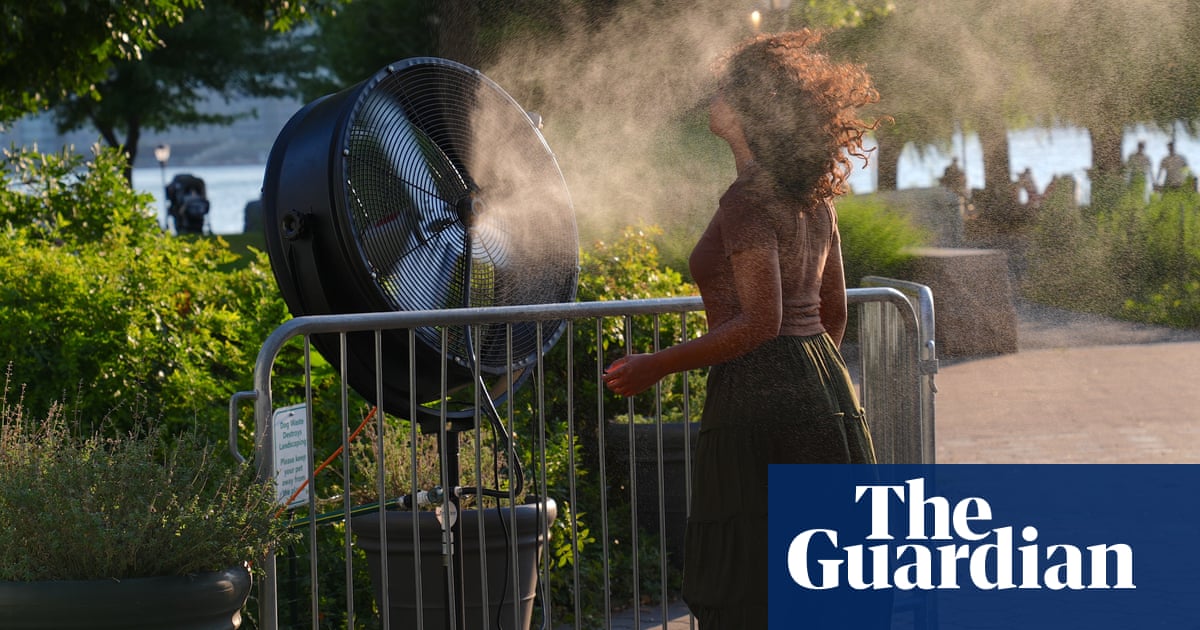Wildlife rescue group Wires faces crunch vote amid volunteer discontent over funds raised after bushfires | Wildlife

Australia’s largest wildlife rescue organisation faces a landmark vote on Sunday, as members unhappy with the distribution of donations after the black summer bushfires attempt to change its constitution.
The income of the Wildlife Information, Rescue and Education Service (Wires), based in NSW, ballooned from $3m to more than $100m thanks to the success of its fundraising campaign after the catastrophic fires of 2019-20, which burned millions of hectares of land and reportedly killed or displaced 3 billion animals.
But some Wires volunteers claim the service has held on to bushfire emergency funds, designed for use nationally, too tightly and for too long, and want them kept separate from the charity’s general operating costs.
John Palmer, who owns a 400-hectare farm in the Riverina, said he had spent $30,000 on sheds and infrastructure to help injured wildlife since the bushfires, but has received just three rolls of shade cloth and a net from Wires, despite making repeated applications to cover more of the cost. Wires has covered Palmer’s monthly feed and vet bills of about $600 a month.
The charity said it had $90.4m in the national fund at the end of June 2020, of which it has spent about $30m. The organisation told Guardian Australia the remainder of the fund had been “100% committed/allocated to approved projects and multi-year programs”.
But Palmer claimed the money was “not fairly distributed”.
“The general public donated so much expecting it to be donated to carers to help wildlife and that has not been the case in the eyes of the members,” he said.
The unprecedented rise in the charity’s income after the fires was “extremely uncommon”, a NSW Fair Trading spokesperson said. It triggered a transfer in status of the incorporated association, which, at the request of Fair Trading, is to become a company limited by guarantee.
As part of those changes, members and management will on Sunday vote for the third time on a new constitution. One version – put forward by some members – keeps bushfire donations separate from the charity’s general operating costs, while another – proposed by Wires management – folds the emergency funds into general accounts. The members opposed to the management proposal say it will undermine oversight of expenditure.
The organisation has about 3,100 members across NSW who volunteer as care workers, taking in and nursing sick animals. The charity performed 70% of all animal rescues across the state last year.
Some in the Wires community say the distribution of funding for volunteers has left them with no confidence in the charity’s leadership and undermines the loyalty of the volunteer base, no matter how Sunday’s vote unfolds.
The Wires carers advocate Sarah Hart said the “appalling treatment of carers has been going on for a long time” but that many were afraid to speak out for fear of losing their authority to rescue and rehabilitate animals and any funding they did receive, such as reimbursement of vets’ bills.
“Carers suffer trauma and isolation and they are not well supported in their role,” Hart said. “They struggle to get reimbursement for basic things like petrol and vet costs and medications.
“The money was supposed to go to them. Certain people have received a lot more than others and many were refused.”
Palmer, who had 21 kangaroo joeys and one possum in care when he spoke to Guardian Australia, said that as a former business owner he was “realistic” about how funds could be spent, but that $10m alone would make a vast difference to volunteers.
“There’s a sense of desperation and of unfairness in the way that [Wires] distribute their funds and support. We don’t mind change, but it shouldn’t be under this leadership.”
Another member, who wished to remain anonymous, said the windfall had shifted the direction of the organisation, with the majority of expenditure so far funnelled towards administrative costs and an expanded head office staff as the charity signalled its plans to expand nationwide.
after newsletter promotion
The member said: “We are seeing really poor management practices resulting in so many volunteers leaving this sector, and with them vast knowledge resources. So many volunteers want to keep caring for wildlife but are literally scared to speak out.
“We just want our volunteer organisation to get back to the grassroots so we can focus on the rescue and rehabilitation of our precious wildlife.”
The Wires spokesperson said the charity had spent $63.9m delivering services and supporting groups since the bushfires.
“Neither Wires nor any other non-government supported wildlife rescue organisation can simply spend their way out of the multiple challenges being faced by our wildlife and their diminishing environment”, they said.
“There are often complex reasons behind every decision involving wildlife and providing the very best of care under National Parks and Wildlife Service protocols.”
Beyond animals’ food costs, free and subsidised training and some vaccinations, reimbursements to members are decided at a branch level.
The spokesperson said that each of Wires’ 28 branches, including Riverina, received $10,000 to cover equipment purchases in 2022.
They said no wildlife rehabilitation group funded all volunteer costs, but that subsidies to Wires branches had increased from $515,000 in 2023 to a forecast $1m-plus in 2024.
“Wires provides more support than most groups in terms of cost recovery to its members”, they said.
The assistant minister for charities, Andrew Leigh, said he did not micromanage individual organisations but it was “not uncommon after a natural disaster for charities to build up resources, which they then spend down” over time.
“But that’s got to be done in a way that meets the expectations of the supporters and so that it’s going to the same purposes that the donors that have given the money for,” he said.
“Ultimately, it’s a question for Wires management”, he said.
Source link




